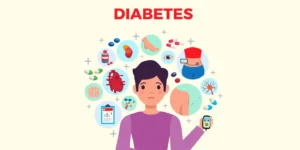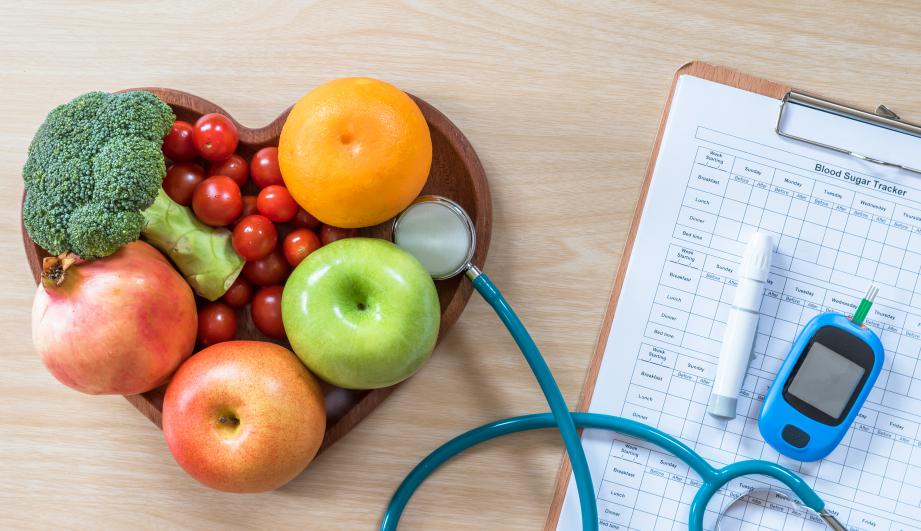Type 2 diabetes, once considered a chronic and irreversible condition, is now being approached with renewed optimism and vigor in the search for a cure. With advancements in medical science, lifestyle interventions, and a deeper understanding of the disease mechanisms, the landscape of type 2 diabetes treatment is evolving. In this blog, we delve into the complexities surrounding type 2 diabetes, debunk common myths, explore promising avenues for cure, and discuss the importance of holistic management approaches.
Contents
What is Type 2 Diabetes?

Type 2 diabetes is a metabolic disorder characterized by high blood sugar levels resulting from insulin resistance and relative insulin deficiency. Insulin, produced by the pancreas, is a hormone responsible for regulating glucose (sugar) levels in the bloodstream and facilitating its entry into cells to be used as energy. In type 2 diabetes, the body either becomes resistant to the effects of insulin, fails to produce enough insulin or both.
Insulin resistance occurs when cells in the body, particularly muscle, liver, and fat cells, become less responsive to insulin signals, leading to impaired glucose uptake. This results in elevated levels of glucose circulating in the bloodstream, known as hyperglycemia. Over time, the pancreas may struggle to keep up with the body’s increased demand for insulin production, leading to a relative insulin deficiency.
Several factors contribute to the development of type 2 diabetes, including:
- Genetic Predisposition: Family history and genetic factors play a significant role in the development of type 2 diabetes. Certain genetic variants can increase an individual’s susceptibility to insulin resistance and impaired glucose metabolism.
- Obesity: Excess body weight, particularly abdominal obesity, is strongly associated with insulin resistance and the development of type 2 diabetes. Adipose tissue, or fat cells, releases inflammatory substances and hormones that can interfere with insulin signaling.
- Sedentary Lifestyle: Lack of physical activity and prolonged sitting have been linked to insulin resistance and an increased risk of type 2 diabetes. Regular exercise helps improve insulin sensitivity and glucose uptake by muscles.
Is It Easy To Cure Type 2 Diabetes?
Curing type 2 diabetes is not easy, but it is possible in some cases, especially with early intervention and comprehensive lifestyle changes. However, it’s essential to understand that “cure” in the context of type 2 diabetes often refers to achieving remission or reversal of the disease rather than a permanent eradication.
Here are some factors to consider regarding the ease of curing type 2 diabetes:
- Individual Variability: The response to treatment and the potential for remission vary from person to person. Factors such as genetic predisposition, disease severity, duration of diabetes, overall health, and treatment adherence play significant roles in determining outcomes.
- Research and Innovation: Ongoing research into the pathophysiology of type 2 diabetes, novel treatment modalities, and regenerative medicine approaches offers hope for more effective therapies and potential cures in the future. However, translating research findings into clinical practice and achieving widespread accessibility remains a challenge.
Types of Methods To Cure Type 2 Diabetes
Curing type 2 diabetes involves addressing the underlying mechanisms of the disease, primarily insulin resistance and impaired insulin secretion, and restoring normal glucose metabolism. While a definitive cure may still be elusive, several methods and approaches have shown promise in achieving remission or reversal of type 2 diabetes. Here are some of the key methods:
Lifestyle Modifications

Lifestyle modifications play a crucial role in the management and potential cure of type 2 diabetes. While they may not lead to a complete eradication of the disease in all cases, lifestyle changes can significantly improve glycemic control, reduce the need for medication, and even induce remission of diabetes in some individuals. Here’s how lifestyle modifications can serve as a cornerstone of type 2 diabetes cure:
Dietary Changes
- Balanced Diet: Adopting a balanced diet that includes a variety of fruits, vegetables, whole grains, lean proteins, and healthy fats is essential for managing blood sugar levels and promoting overall health. Focus on nutrient-dense foods and minimize the consumption of processed foods, sugary snacks, and beverages.
- Carbohydrate Management: Pay attention to carbohydrate intake and choose complex carbohydrates with a low glycemic index, such as whole grains, legumes, and non-starchy vegetables. Distributing carbohydrates evenly throughout the day and pairing them with protein and fiber-rich foods can help prevent spikes in blood sugar levels.
- Portion Control: Practice portion control to avoid overeating and stabilize blood sugar levels. Eating smaller, more frequent meals can help regulate appetite and prevent large fluctuations in blood glucose levels.
Regular Physical Activity
- Aerobic Exercise: Engage in aerobic activities such as walking, jogging, cycling, swimming, or dancing for at least 150 minutes per week, as recommended by health guidelines. Aerobic exercise helps lower blood sugar levels, improve insulin sensitivity, and promote weight loss.
- Strength Training: Incorporate strength training exercises, such as weightlifting or bodyweight exercises, into your routine at least two days per week. Strength training builds muscle mass, which can enhance insulin sensitivity and metabolic health.
- Flexibility and Balance Exercises: Include flexibility and balance exercises, such as yoga or tai chi, to improve range of motion, joint stability, and overall well-being.
Weight Management
- Healthy Weight Loss: If overweight or obese, aim for gradual and sustainable weight loss through a combination of calorie control, physical activity, and behavior modification. Even modest weight loss (5-10% of body weight) can lead to significant improvements in insulin sensitivity and glycemic control.
- Long-Term Maintenance: Focus on long-term weight management by adopting healthy eating habits, regular exercise, and lifestyle changes that are sustainable and enjoyable. Monitor weight regularly and seek support from healthcare professionals, dietitians, or support groups as needed.
Medications
While medications play a vital role in managing type 2 diabetes by controlling blood sugar levels and reducing the risk of complications, they are not typically considered a cure for the disease. However, certain medications can help improve insulin sensitivity, promote glucose uptake, and enhance pancreatic function, leading to better glycemic control and potentially slowing the progression of the disease. Here’s how medications can contribute to type 2 diabetes management and potential remission:
Oral Medications

- Metformin: Metformin is often prescribed as a first-line medication for type 2 diabetes due to its ability to lower blood sugar levels, reduce insulin resistance, and inhibit glucose production in the liver. It is typically taken orally and is well-tolerated by most individuals.
- Sulfonylureas: Sulfonylureas stimulate insulin secretion from the pancreas, thereby lowering blood sugar levels. They are usually taken once or twice daily and can help improve glycemic control, but they may cause weight gain and hypoglycemia (low blood sugar).
- Thiazolidinediones (TZDs): TZDs improve insulin sensitivity in muscle and fat cells, making it easier for these tissues to respond to insulin. They are taken orally and can help lower blood sugar levels and reduce the risk of cardiovascular events, but they may be associated with side effects such as weight gain and fluid retention.
- DPP-4 Inhibitors: DPP-4 inhibitors help lower blood sugar levels by blocking the enzyme dipeptidyl peptidase-4, which breaks down incretin hormones involved in glucose regulation. They are typically taken orally and have a low risk of hypoglycemia.
- GLP-1 Receptor Agonists: GLP-1 receptor agonists stimulate insulin secretion, suppress glucagon secretion, slow gastric emptying, and promote weight loss. They are available as injections or as a once-weekly injectable formulation and can help improve glycemic control and reduce cardiovascular risk.
Injectable Medications
- Insulin Therapy: Insulin therapy is often used in individuals with type 2 diabetes who cannot achieve adequate glycemic control with oral medications alone. Insulin injections help lower blood sugar levels by replacing or supplementing the body’s natural insulin production. Various types of insulin are available, including rapid-acting, short-acting, intermediate-acting, and long-acting formulations.
- GLP-1 Receptor Agonists: Injectable GLP-1 receptor agonists, such as exenatide and liraglutide, mimic the action of incretin hormones help improve insulin secretion, suppress glucagon secretion, and promote weight loss. They are typically administered once or twice daily or as a once-weekly injection.
Bariatric Surgery
Bariatric surgery, particularly procedures such as gastric bypass and sleeve gastrectomy, has been shown to induce significant weight loss and improve metabolic health in obese individuals with type 2 diabetes. While it may not be considered a traditional “cure,” bariatric surgery can lead to remission of type 2 diabetes in many cases, with some individuals experiencing long-term improvements in glycemic control and metabolic function. Here’s how bariatric surgery can serve as an effective treatment for type 2 diabetes:
- Weight Loss and Metabolic Changes:
- Bariatric surgery results in significant weight loss by reducing the size of the stomach and/or altering the digestive tract’s anatomy. This leads to decreased food intake, early satiety, and changes in gut hormone levels, including increased secretion of GLP-1 (glucagon-like peptide-1) and PYY (peptide YY), which help regulate appetite and improve glucose metabolism.
- Rapid weight loss following bariatric surgery can improve insulin sensitivity, reduce insulin resistance, and enhance glucose uptake by tissues, leading to improved glycemic control and lower blood sugar levels. Many individuals experience normalization of blood glucose levels and reduced reliance on diabetes medications post-surgery.
Regenerative Medicine
Here’s how regenerative medicine holds potential for type 2 diabetes cure:
Stem Cell Therapy:
- Stem cell therapy involves the transplantation of stem cells, which can differentiate into various cell types, including insulin-producing beta cells. Researchers are exploring different sources of stem cells, such as embryonic stem cells, induced pluripotent stem cells (iPSCs), and adult stem cells, for use in regenerating pancreatic tissue.
- In preclinical studies and early-phase clinical trials, stem cell transplantation has shown promising results in restoring beta-cell mass and function in animal models and human participants with type 1 and type 2 diabetes. However, challenges remain in achieving consistent and durable engraftment of transplanted cells, avoiding immune rejection, and ensuring safety and efficacy.
Pancreatic Islet Transplantation:
- Pancreatic islet transplantation involves isolating and transplanting insulin-producing islet cells from the donor pancreas into the recipient’s liver or other suitable sites. Islet transplantation offers a minimally invasive approach to restoring beta-cell function and insulin secretion in individuals with type 1 and type 2 diabetes.
- While islet transplantation has demonstrated success in achieving insulin independence and improving glycemic control in some individuals with severe diabetes, challenges such as donor shortage, immune rejection, and long-term graft survival limit its widespread applicability.
Complementary and Alternative Therapies
However, some CAM approaches have shown promise in improving glycemic control, reducing diabetes-related complications, and enhancing quality of life. Here are some complementary and alternative therapies commonly used in type 2 diabetes management:
Herbal Supplements:

- Certain herbs and botanical extracts have been traditionally used in various cultures to help regulate blood sugar levels and improve insulin sensitivity. Examples include cinnamon, fenugreek, bitter melon, ginseng, and aloe vera.
- While research on the efficacy of herbal supplements in type 2 diabetes management is ongoing, studies have shown mixed results, and the evidence supporting their effectiveness is often limited and inconclusive.
Acupuncture:
- Acupuncture, an ancient Chinese healing practice, involves the insertion of thin needles into specific points on the body to stimulate energy flow and restore balance. Some studies suggest that acupuncture may help improve insulin sensitivity, reduce inflammation, and alleviate neuropathic pain in individuals with type 2 diabetes.
- While acupuncture is generally considered safe when performed by trained practitioners, more research is needed to determine its long-term effects on glycemic control and diabetes-related outcomes.
Conclusion
The search for a cure for type 2 diabetes persists, but progress in understanding and treating the disease is substantial. Lifestyle changes and advanced medical treatments offer hope for improved management. Integrating personalized care, patient empowerment, and scientific innovation can lead to a world where type 2 diabetes becomes a manageable condition. It is rather than a lifelong burden, with the potential for a cure.
Do you want to get rid of diabetes? Join our online diabetes treatment program and reverse Diabetes naturally through lifestyle changes such as a Personalized Diet plan, Exercise, Yoga, dieticians, and health coaches.

